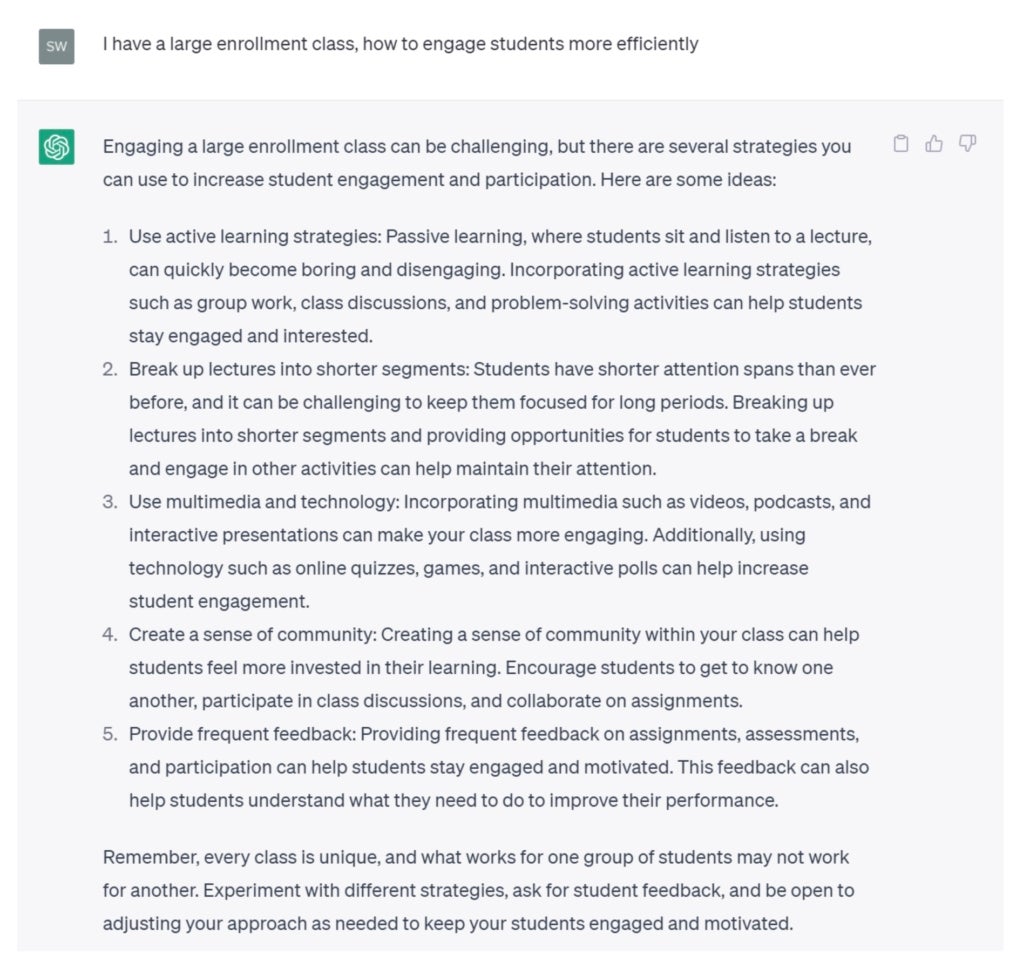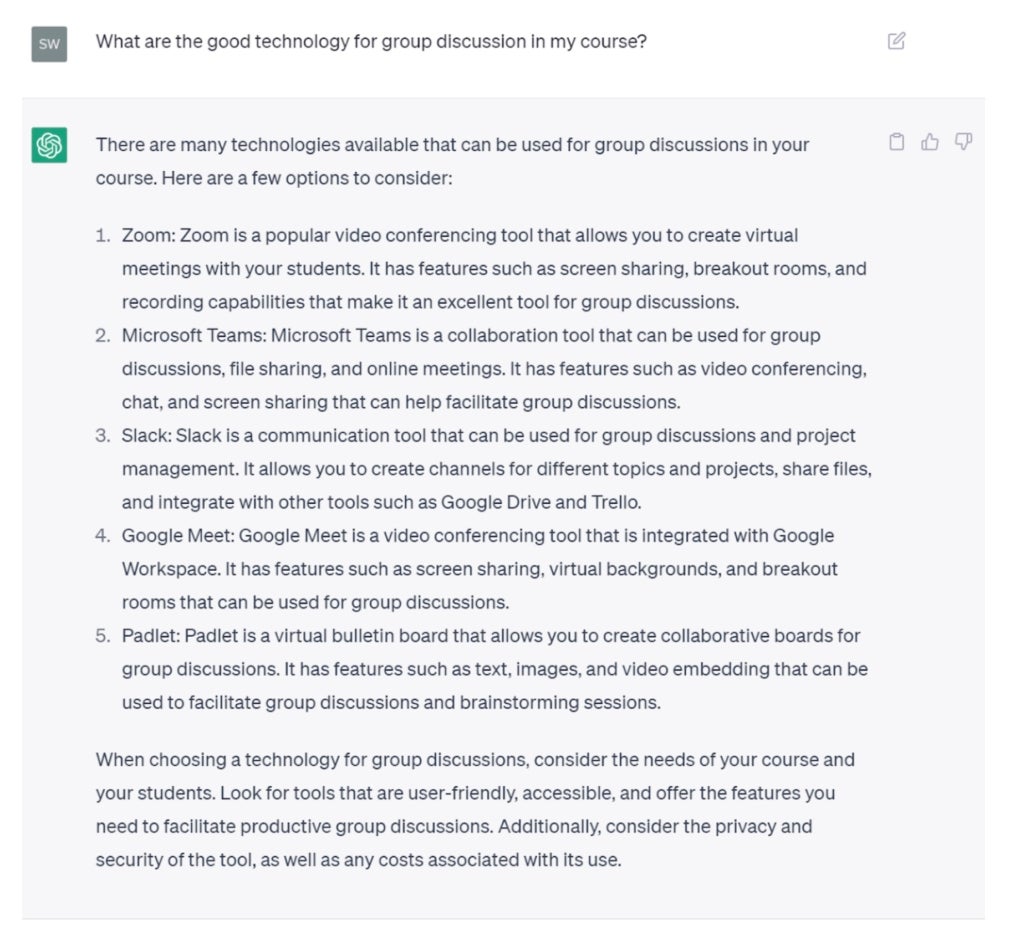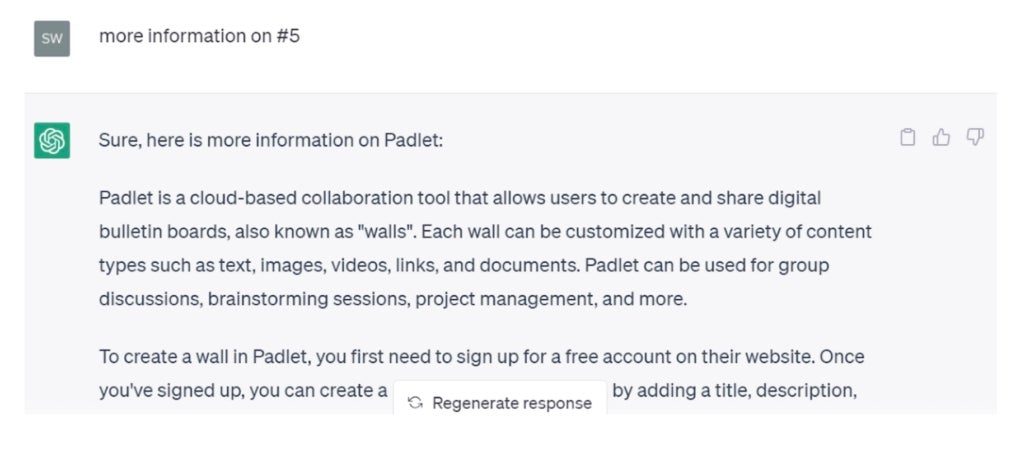Using ChatGPT to Lead In-depth Conversations with Instructional Designers
The following are notes from OTL’s session for the AI in Action series.
Sirui Wang and Brittany Goodwell explored possible ways to use ChatGPT to start thinking about different teaching and learning challenges using two scenarios to begin instructional design conversations between faculty and instructional designers. Both scenarios included questions and requests often asked by faculty. There were opportunities to interact with ChatGPT and instructional designers.
How can ChatGPT be involved in the course design process?
- ChatGPT integrates related information and output in a well-structured way. The advantage of using this generative AI enhances the consultation process with higher efficiency.
- The conservation style allows the information to be built upon one another, forming a useful dialogue designers can share later.
- Using ChatGPT in the initiative process of an instructional design consultation helps focus on what faculty needs and narrow the topics, making the discussion with instructional designers more efficient and allowing in-depth discussion.
However, what ChatGPT provides is usually very surface and general, and instructional designers must step in and continue the in-depth conversation.
Instructional Designers’ Roles in the AI Age
- In-depth conversation
- Connect with the real course design
- Ensure equity and inclusion
- Create personalized learning experiences that adapt to the needs of individual learners
- Incorporate gamification and simulations to make learning more interactive and engaging
- Share experience
Scenario 1 – Identify the Teaching and Learning Challenges
How to use ChatGPT to begin the conversation?
- Start with the basic question/challenge
- Go through the options, and see if there is anything that interests you
- Ask for or think of more specific questions, such as #5, why frequent feedback will engage students more efficiently, how to provide frequent feedback, what types of feedback can be provided, etc.
But ChatGPT does not have the accurate context for what it outputs, so a continued conversation with instructional designers are strongly encouraged.
How to continue the topic with an Instructional Designer?
- Discuss and continue the specific questions: Why feedback loop is important, especially online? What feedback loops can and will include?
- Clarify the focus: what could be a good fit for your class? How do involve the three parties in a class: instructor, TAs, and students?
- The deeper conversations: how does it align with other class pieces?
- Access to other successful course design experiences from different courses
Scenario 2 – Educational Technology Recommendations
How to continue the topic with an Instructional Designer?
- Review and refine the recommendations: The faculty member could work with the instructional designer to review the recommendations generated by ChatGPT and refine them based on their specific course needs. The instructional designer could help the faculty member evaluate the options based on factors such as ease of use, accessibility, cost, and pedagogical value.
- Identify and address potential challenges: The faculty member and instructional designer could discuss potential challenges that may arise from implementing the selected educational technology in their course. This could include issues related to technology integration, student engagement, and support for students who may have varying levels of technological proficiency.
- Explore implementation strategies: The faculty member and instructional designer could work together to explore implementation strategies for the educational technology recommendations.
- Determine next steps: The faculty member and instructional designer could determine next steps for moving forward with the implementation of the selected educational technology. This could include identifying any additional support or resources needed, setting timelines for implementation, and designing appropriate activities.



